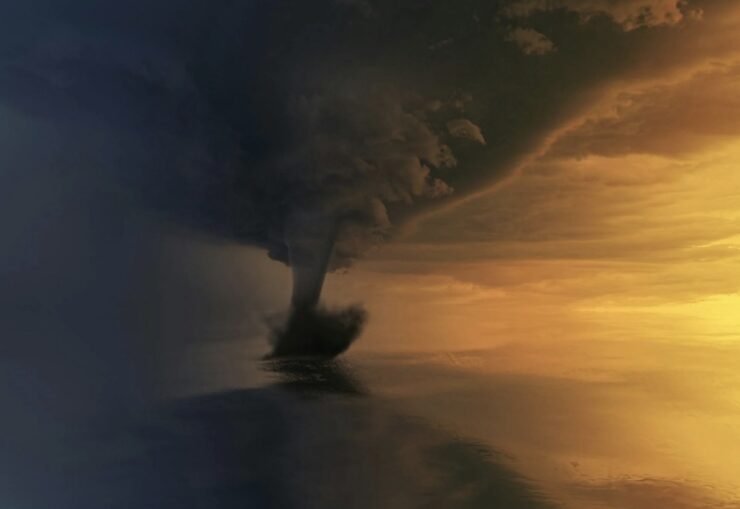
Tetsuya Theodore Fujita was an acclaimed Japanese American meteorologist whose studies at the University of Chicago led to the development of the Fujita Scale. Mr. Fujita first introduced the system in 1971 as a means of rating tornado intensity based on the level of damage left in their wake. In 2007, the rating system was updated and renamed the Enhanced Fujita (EF) Scale, which includes intensity scores from 0 to 5.
An EF0 tornado features wind speeds from 65-85 mph and causes light damage, while an EF1 tornado can have wind speeds from 86-110 mph and result in moderate damage. The highest levels on the EF Scale are EF4 and EF5, with winds ranging from 166 to over 200 mph, causing catastrophic damage. EF5 tornadoes are very rare in the United States, with only 0.06% reaching this level of intensity, the last of which occurred on May 20, 2013, in Moore, OK.
The majority of tornadoes that occur in the United States, making up 70-75% of all tornadoes, fall within the EF0- 1 range. Though technically low on the scale and typically associated with light to moderate damage, these storms can still be devastating. On April 2, 2025, a string of storms swept through what is known as Tornado Alley, which runs through mostly Texas, Oklahoma, Kansas, and Nebraska. At approximately 7 a.m., a tornado touched down near 96th Street North and Garnett Road in Owasso, OK. The National Weather Service rated the tornado as a High-End EF1 event, with wind speeds ranging from 86 to 110 mph.
Fortunately, no fatalities or injuries were reported. However, the storm damaged more than 287 structures, with at least 15 sustaining major damage. City officials declared a state of emergency to expedite recovery and rehabilitation measures. The first step was for the Owasso Police Department, under the leadership of Chief Dan Yancey, to begin assessing damage using drone technology. The Owasso Police Department has had a drone program for about a year. Initially, drones equipped with thermal imaging cameras were used to monitor high-traffic areas during holiday shopping seasons to ensure public safety. It didn’t take long for officers to expand their use, incorporating drone technology to provide situational awareness, emergency support, and search and rescue assistance.
Officer Nick Boatman, one of the FAA Part 107 authorized officers in the drone program, explained that drone technology has become a critical asset in modern policing. “Drones are here to stay in law enforcement and pretty much every aspect of life,” Officer Boatman said. “They cut down on so much staffing and manpower and labor issues. You can just throw a drone up and do [sic] what 10 officers can see in a specific area, and you can track people a lot easier as well.” He went on to share that the department first used drones in response to natural weather events last year.
Officer Boatman said that drone technology enabled the department to assist with disaster relief by providing Geographic Information System (GIS) mapping data. GIS mapping allows emergency management teams to determine the exact path of a tornado, its intensity, and how to plan recovery efforts. After the most recent tornado, using drones sped up emergency management by safely reaching areas inaccessible to officers and collecting essential GIS mapping data.
Additionally, Officer Boatman noted that the department expanded its drone use during this storm to monitor for individuals attempting to exploit the disaster by looting damaged homes and businesses. “We’ve been using them a lot at night. With the thermal imaging in those drones, you can see people moving around at night and it’s very easy to direct a non-foot officer to a person if you’ve got the drone in the sky,” he said. While no incidents of suspected looting have been reported, Officer Boatman emphasized that for victims of the storm, knowing there’s an “eye in the sky” watching over their property offers a much-needed sense of comfort.
Meteorological technology has come a long way, helping provide clearer predictive models of natural disasters such as tornadoes. Similarly, technology like drones has advanced to assist in the aftermath of these severe weather events. As the Owasso Police Department has demonstrated, rapidly deploying drones can be critical in assessing storm related damage and supporting emergency recovery efforts. But it goes further than that, drones can also help provide communities with a sense of security when they are at their most vulnerable.
|